What to see in Kuala Lumpur in 3 days
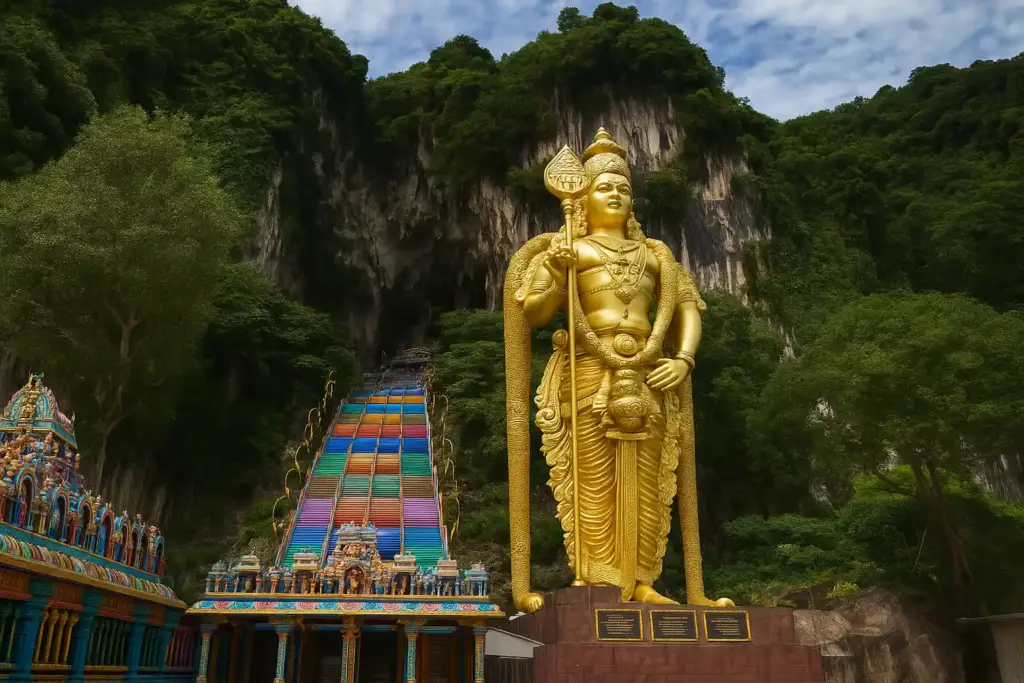
We’ve put together a complete itinerary to help you make the most of your visit to the Malaysian capital. The plan is organised to group the main attractions efficiently, keeping locations in mind to minimise travel time.
Day 1: The modern heart of the city
Start your visit by exploring Kuala Lumpur’s most modern and iconic area. Spend the morning at the majestic Petronas Towers and make sure to book your ticket in advance for the first time slot. After that, relax in KLCC Park, where you can catch the Lake Symphony fountain show and snap the perfect photo of the towers.
In the afternoon, head up the Kuala Lumpur Tower for panoramic views of the city. End the day exploring the Bukit Bintang district, known for its shopping and entertainment scene. It’s the perfect place to have dinner or enjoy the city’s nightlife.
Day 2: Culture and tradition
Spend the morning visiting the impressive Batu Caves. Go early to avoid the heat and the crowds. On your way back to the city centre, visit the historic Jamek Mosque and the National Mosque of Malaysia, two architectural gems that reflect the city’s Islamic heritage.
In the afternoon, explore the lively neighbourhood of Little India (Brickfields) and end the day at Jalan Alor, where you can try some of the best street food in the city in a unique setting.
Day 3: History and local traditions
Start your day early at the historic Central Market and continue to Chinatown. Don’t miss the charming alley of Kwai Chai Hong with its artistic murals. Visit the impressive Sri Maha Mariamman Temple and stroll through the bustling Petaling Street.
In the afternoon, make your way to the majestic Thean Hou Temple for stunning views of the city at sunset. Finish your trip at the historic Merdeka Square, the heart of old Kuala Lumpur.
Petronas Towers
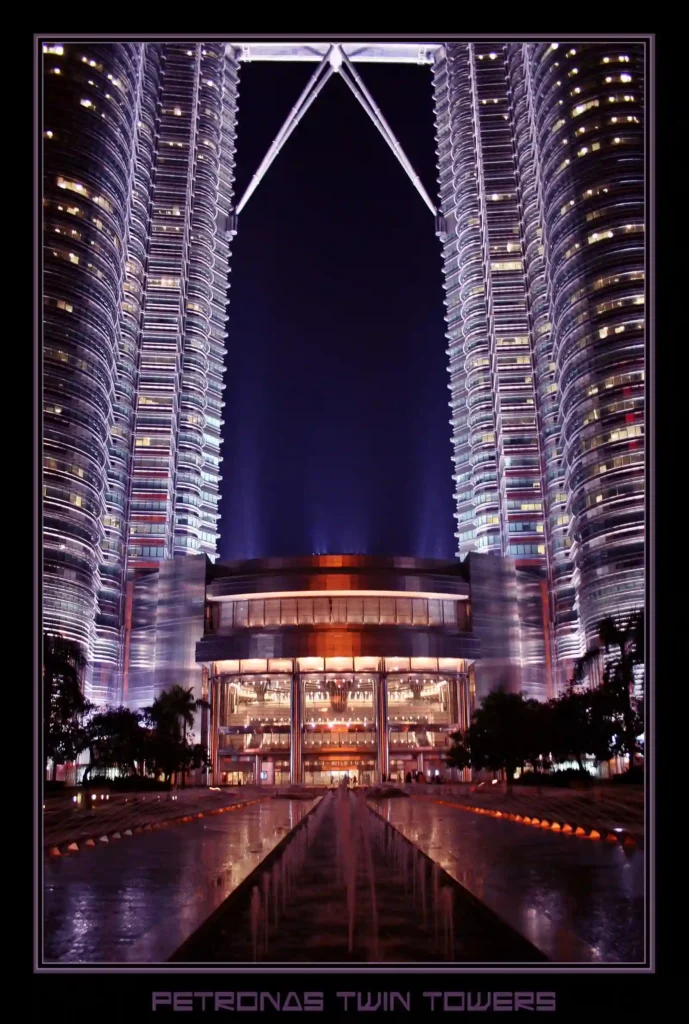
The iconic Petronas Towers rise majestically in the heart of Kuala Lumpur, representing not only the city’s most recognisable symbol but also a milestone in modern global architecture. Standing 452 metres tall, these twin giants held the title of the world’s tallest buildings from 1998 to 2004 and remain the tallest twin towers ever built. Designed by architect César Pelli, the towers masterfully blend elements of Islamic geometry with the sleekness of steel and glass, striking a perfect balance between Malaysian cultural tradition and architectural innovation.
At the base of the towers, you’ll find a sophisticated shopping mall, the headquarters of prestigious international companies and, for those looking to discover what to see in Kuala Lumpur, the famous Skybridge. This connecting bridge on floors 41 and 42 offers visitors the chance to walk between the two towers at a height of 170 metres. The views from here are spectacular, but the real highlight is the observation deck on the 86th floor, where you can take in the full splendour of the Malaysian capital.
Visiting the Petronas Towers is more than just admiring architecture. The surrounding KLCC complex includes a 20-hectare park with artificial lakes, musical fountains and jogging paths, making it a perfect urban oasis to relax after exploring what to do in Kuala Lumpur. At dusk, the towers light up in a stunning display that turns the cityscape into something magical, creating the ideal moment for photos.
Batu Caves

The Batu Caves are one of the most fascinating places to visit in Kuala Lumpur, bringing together nature, spirituality and architecture in a single site. This limestone cave complex, formed more than 400 million years ago, is home to one of the most important Hindu temples outside India. The towering golden statue of Lord Murugan, standing 42.7 metres tall, guards the entrance and is the tallest Hindu statue in the world outside India.
To reach the main temple, visitors must climb the iconic 272 steps, painted in vibrant rainbow colours that have turned this place into one of the most photographed spots in Malaysia. Along the way, the cheeky long-tailed macaques that inhabit the area provide a bit of extra entertainment, though it’s important to keep your belongings safe as these monkeys are known for their curiosity and occasional thievery.
At the top, the main Temple Cave impresses with its natural vaulted ceiling rising up to 100 metres. Sunlight filters through natural openings, creating a mystical atmosphere that lights up the various shrines and altars dedicated to Hindu deities. During the Thaipusam festival, held between January and February, the site becomes the heart of one of the most important Hindu celebrations outside India.
Chinatown and Petaling Street
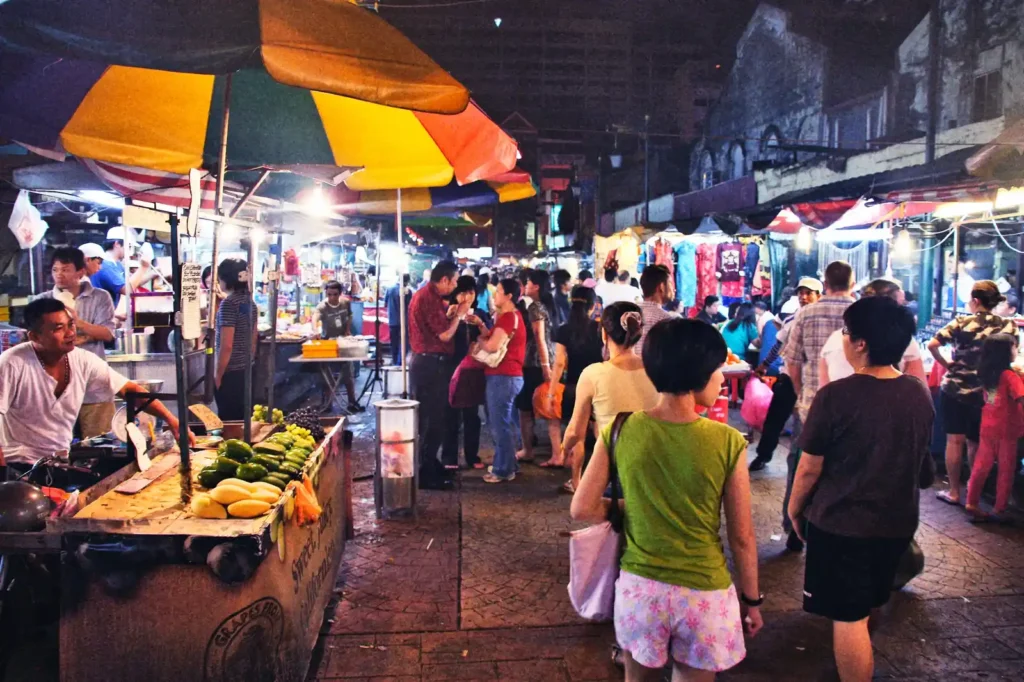
The bustling Chinatown district is one of the most vibrant and authentic places to visit in Kuala Lumpur. Centred around the famous Petaling Street, this historic neighbourhood is a living testament to the city’s rich Chinese heritage. Narrow streets are lined with traditional Chinese architecture, home to century-old temples, old-school shops and some of the city’s best street food stalls.
Petaling Street, the beating heart of Chinatown, turns into a lively night market at dusk, covered by a distinctive green roof. Here, visitors can dive into a unique shopping experience where bargaining is part of the culture. From replica designer items to traditional Chinese goods, the market offers a wide range of options for those looking for what to do in Kuala Lumpur.
Beyond shopping, Chinatown is a feast for the senses. The many food stalls and traditional restaurants serve up an authentic taste of Chinese and Malaysian cuisine. Dishes like Hokkien Mee, Claypot Chicken Rice and various dim sum allow visitors to explore the most genuine flavours of the local food scene. Tucked away in the back alleys, you’ll find architectural gems like the Sri Mahamariamman Temple, the oldest Hindu temple in the city, adding a fascinating layer of cultural contrast.
Merdeka Square

The historic Merdeka Square, also known as Independence Square, is a landmark every traveller should include when planning what to see in Kuala Lumpur. This symbolic site was the setting of one of the most significant moments in Malaysia’s history: the declaration of independence from British rule in 1957. A towering 95-metre flagpole, one of the tallest in the world, proudly flies the Malaysian flag in memory of that day.
Surrounding the square is an impressive collection of British colonial architecture, with the standout being the majestic Sultan Abdul Samad Building. This Moorish-style structure, with its copper dome and central clock tower, is one of the most photographed buildings in the city and a prime example of the blend between British design and Islamic influence. The former cricket field, now part of the square, is a reminder of Malaysia’s colonial past and remains a vital green space in the heart of the city.
Merdeka Square isn’t just a historical monument. It’s also a cultural hub where national events and festivals are regularly held. The surrounding buildings house important institutions like the Textile Gallery and the Kuala Lumpur City Gallery, offering visitors a chance to explore the city’s rich history and culture in more depth. For those wondering what to do in Kuala Lumpur, the square provides the perfect blend of history, architecture and vibrant local life.
KLCC Park and Lake Symphony Fountain Show
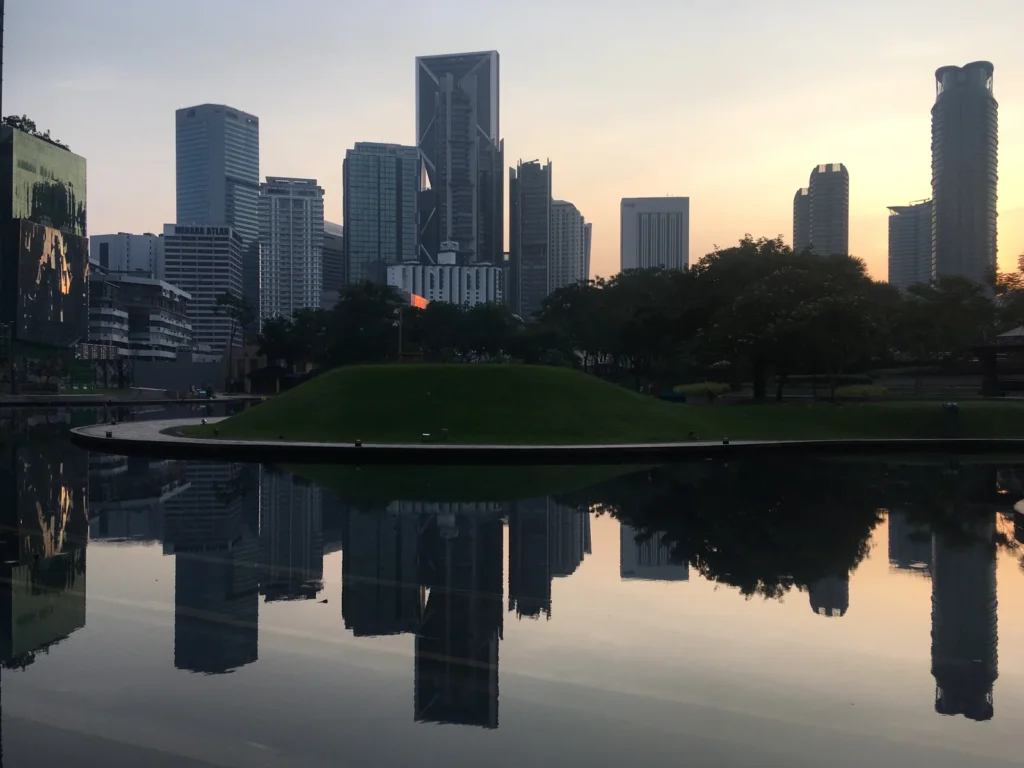
KLCC Park is a 20-hectare urban oasis in the heart of the city, offering one of the most refreshing places to visit in Kuala Lumpur. Designed by renowned architect Roberto Burle Marx, the park blends Malaysian tropical landscaping with modern urban design. Winding pathways lined with over 1,900 native plant species provide a peaceful green retreat with unbeatable views of the Petronas Towers.
The centrepiece of the park is the spectacular Lake Symphony, an artificial lake that hosts one of the most impressive musical fountains in Southeast Asia. The fountains are programmed for light and music shows, reaching heights of up to 42 metres. It’s a must-see activity in Kuala Lumpur, especially at night when the shows take on a truly magical quality.
The park also features a range of recreational facilities, making it a well-rounded destination for visitors of all ages. A reflecting pool, covered children’s playground, 1.3-kilometre jogging track and elevated bridge offer different ways to enjoy the cityscape. The birdwatching area and two-level waterfall bring natural touches that beautifully contrast with the urban surroundings.
National Mosque of Malaysia

The National Mosque of Malaysia (Masjid Negara) is a striking example of modern Islamic architecture and one of the most significant landmarks to visit in Kuala Lumpur. Built in 1965, shortly after Malaysia’s independence, it represents the spiritual freedom of the nation and can accommodate up to 15,000 worshippers. Its unique design blends traditional Islamic elements with modern architecture, most notably the folded umbrella-shaped main roof, which symbolises the five pillars of Islam.
The mosque complex spans 13 acres of beautifully maintained gardens, featuring reflective pools and traditional pavilions. The main minaret rises 73 metres above ground, while the roof is decorated with intricate geometric patterns that create a fascinating play of light and shadow. Visitors can admire detailed Arabic calligraphy, ornate lattice windows and spacious prayer halls that reflect the grandeur of Islamic design.
One of the most interesting aspects for those looking for what to do in Kuala Lumpur is the chance to join a free guided tour offered by mosque volunteers. These tours provide valuable insight into the building’s architecture, Islamic practices and the mosque’s cultural significance in modern Malaysian society. The guides are always happy to answer questions and share unique perspectives on religious life in Malaysia.
Menara Kuala Lumpur

The KL Tower (Menara Kuala Lumpur) rises 421 metres above the city, offering a unique perspective over the Malaysian capital and standing out as one of the top sights to see in Kuala Lumpur. As the fourth tallest telecommunications tower in the world, this iconic structure blends modern functionality with traditional Islamic architectural elements. Its strategic location on Bukit Nanas Hill provides sweeping 360-degree views, including a prime angle on the Petronas Towers.
The observation deck, situated at 276 metres, delivers unmatched city views and features glass floors for the daring. The Atmosphere 360° revolving restaurant, located at 282 metres, offers a dining experience like no other as the city slowly rotates beneath you, completing one full turn every 90 minutes. For those wondering what to do in Kuala Lumpur, the tower also offers additional attractions including a mini zoo, a cultural village and regular cultural shows.
At the base, visitors will find several entertainment levels including an art gallery, souvenir shops and an interactive exhibition centre that explores the history and technology behind the tower’s construction. The complex is surrounded by KL Forest Eco Park, the last stretch of virgin rainforest in central Kuala Lumpur, where visitors can walk along canopy trails and experience nature in the heart of the city.
Sri Maha Mariamman Temple
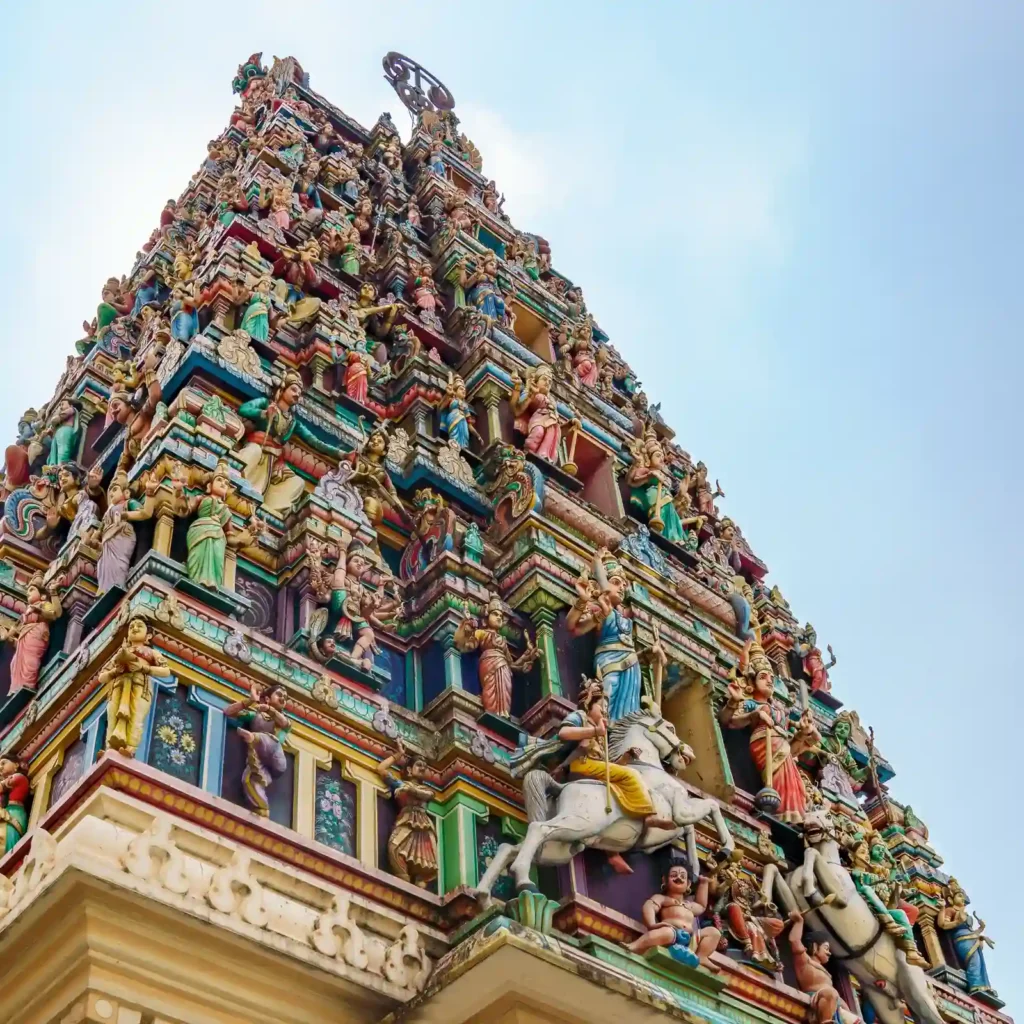
Sri Maha Mariamman Temple, the oldest Hindu temple in Kuala Lumpur, is one of the city’s most important cultural treasures and a must-see attraction. Founded in 1873, this sanctuary dedicated to the goddess Mariamman is an outstanding example of South Indian Dravidian architecture. Its most striking feature is the five-tiered gopuram (entrance tower), decorated with more than 228 colourful sculptures of Hindu deities and mythological creatures, each one meticulously carved and painted.
The interior is equally captivating, with intricate frescoes adorning the ceilings and walls, telling stories from Hindu mythology. The main shrine houses the image of goddess Mariamman, revered as a protector against illness and a guardian of health and prosperity. Devotees offer prayers and gifts in an atmosphere filled with the scent of incense and the sound of Vedic chants, creating a deeply immersive experience for those exploring what to do in Kuala Lumpur.
Jalan Alor

Jalan Alor has rightfully earned its title as the gastronomic mecca of Kuala Lumpur, making it one of the must-visit destinations in the city. This lively street, which truly comes alive after sunset, is the epitome of Malaysian street food culture. Endless rows of food stalls and open-air restaurants offer a unique culinary experience where Chinese, Malay and Indian flavours come together.
The tempting aromas of iconic dishes like Satay, Hokkien Mee and Char Kway Teow fill the air as cooks prepare their specialities in plain sight. Traditional Chinese barbecue stalls serve up fresh seafood and grilled meats, while durian vendors challenge the bold to try the “king of fruits.” For those exploring what to do in Kuala Lumpur, this street offers full immersion in local food culture.
But Jalan Alor is more than just food. The vibrant atmosphere, plastic tables spilling into the street, neon signs and the constant buzz of locals and tourists create a setting that captures the essence of Kuala Lumpur’s nightlife. Street vendors also serve traditional desserts like Ais Kacang and Cendol, perfect for cooling off in the city’s tropical climate.
Central Market

The historic Central Market, a 1930s Art Deco building, is one of the most important cultural hubs to visit in Kuala Lumpur. Originally a wet market, it has been transformed into a centre for Malaysian crafts and culture. Now listed as a National Heritage Site, the building retains its signature pastel blue facade and original structure, serving as a prime example of architectural preservation amid the city’s modern development.
Inside, the market is divided into zones that reflect Malaysia’s cultural diversity. Lorong Melayu features traditional Malay handicrafts, while Straits Chinese and Little India showcase unique products from those communities. For anyone wondering what to do in Kuala Lumpur, the market is a great place to find authentic souvenirs, from batik fabrics and traditional textiles to local jewellery and antiques. Local artisans often offer live demonstrations of their craft techniques.
The Annexe, a modern extension of the market, houses art galleries, performance spaces and studios where local artists work and exhibit. The upstairs food court offers a variety of traditional Malay dishes, making it a great spot to take a break after browsing. On weekends, the outdoor area comes alive with cultural performances and live music, creating a festive atmosphere enjoyed by locals and visitors alike.
On the ground floor, look for the tucked-away shop of an elderly artisan who has been carving personalised stamps by hand for over 40 years. For a small fee, he can carve your name in traditional Chinese or Malay script while you wait — a one-of-a-kind souvenir you won’t find anywhere else.
Little India (Brickfields)
Little India, located in the historic Brickfields district, is a cultural enclave that offers a unique experience for anyone exploring what to see in Kuala Lumpur. The streets, decorated with bright arches and lotus-shaped streetlights, are filled with the scent of spices and jasmine flowers. This lively neighbourhood is the heart of the Indian community in Kuala Lumpur, offering total immersion in the culture, cuisine and traditions of the Indian subcontinent.
Shops lining the main streets display a dazzling array of saris, textiles, jewellery and religious items. The sound of Bollywood music mixes with the jingling of bangles and the hum of vendors negotiating prices. For those looking for what to do in Kuala Lumpur, the many restaurants here serve authentic South Indian cuisine, from crispy dosas to full thali meals served on traditional banana leaves.
The neighbourhood becomes especially lively during Indian festivals like Deepavali and Thaipusam, when the streets light up with decorations and fill with cultural celebrations. Local Hindu temples, such as the Sri Kandaswamy Temple, offer a glimpse into the spiritual life of the community. Spice shops and ayurvedic stores provide a chance to explore traditional Indian medicine and pick up authentic ingredients.
Thean Hou Temple

The majestic Thean Hou Temple stands on a hill with panoramic views of the city and is one of the largest Buddhist temples in Southeast Asia, making it a must-see in Kuala Lumpur. This six-tiered structure blends contemporary, Buddhist, Taoist and Confucian architectural styles into a unique design that reflects the rich Chinese heritage of Malaysia. Dedicated to the goddess Tian Hou (Heavenly Mother), the temple functions both as an active place of worship and a popular tourist attraction.
The architecture is truly impressive, with its multi-tiered curved roofs, ornate pillars and detailed carvings depicting scenes from Chinese mythology. The surrounding gardens include a traditional medicinal herb garden and statues of the twelve Chinese zodiac animals. For those wondering what to do in Kuala Lumpur, the temple offers a unique cultural experience, especially during traditional Chinese festivals like Lunar New Year and the Mid-Autumn Festival.
Inside, the temple is richly decorated with traditional red lanterns, intricate murals and ornate altars. The main prayer hall houses three altars dedicated to different deities, while the upper floors offer spaces for meditation and quiet reflection. The views from the temple terraces are especially stunning at sunset, when the Kuala Lumpur skyline glows in golden light.
Visit the temple during the Lantern Festival (15th day of the first lunar month) when thousands of red lanterns light up the entire complex. Arrive at dusk to witness the transition from daylight to night lighting — the perfect moment for spectacular photos.
Bukit Bintang
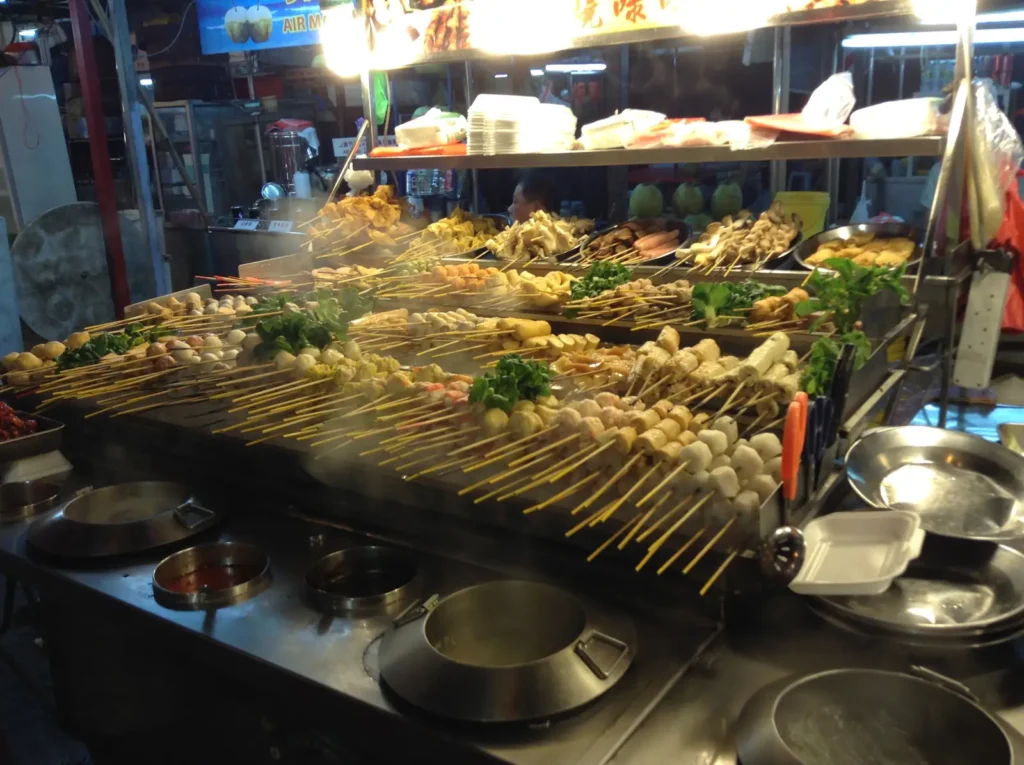
Bukit Bintang is the commercial and entertainment heart of Kuala Lumpur and one of the most vibrant destinations to visit in the city. This dynamic district combines modern shopping malls, fine dining restaurants, trendy cafes and a lively nightlife scene, all connected by covered walkways and an efficient public transport network. The brightly lit streets and neon signs create an electrifying atmosphere that draws both locals and visitors.
The area is home to some of the city’s most prestigious malls, including Pavilion KL, Lot 10 and Berjaya Times Square, offering an unmatched shopping experience for anyone exploring what to do in Kuala Lumpur. From international luxury brands to local boutiques, the district caters to every taste and budget. The food courts in these malls are a great introduction to the city’s diverse culinary scene, with options ranging from local street food to Michelin-starred restaurants.
At night, Bukit Bintang comes alive with a different kind of energy. Changkat Bukit Bintang becomes the centre of nightlife, filled with themed bars, international restaurants and live music venues set in restored colonial buildings. The side streets are dotted with artisanal cafes and hidden cocktail bars that offer more intimate and sophisticated experiences.
Jamek Mosque

The historic Jamek Mosque, also known as Masjid Jamek Sultan Abdul Samad, is one of the oldest and most significant religious buildings to visit in Kuala Lumpur. Built in 1909 at the confluence of the Klang and Gombak rivers, the site where the city was founded, this mosque is a magnificent example of Mughal and Indo-Saracenic architecture. Its onion-shaped domes, minarets and pointed arches form an unforgettable silhouette that reflects the city’s rich Islamic heritage.
The mosque was designed by British architect Arthur Benison Hubback, who drew inspiration from North Indian Mughal architecture. The well-maintained gardens surrounding the mosque offer a peaceful oasis amid the urban bustle, while the new River of Life square next to it has transformed the riverfront into a vibrant public space. For those exploring what to do in Kuala Lumpur, the area offers fantastic photo opportunities, especially at sunset when the illuminated fountains create a striking visual show.
The interior of the mosque, while more modest than its exterior, stands out for its serenity and traditional architectural details. The inner courtyards with their ritual ablution fountains and the prayer halls provide a quiet glimpse into Muslim religious life. Free guided tours offer valuable insight into the mosque’s history and its role in the development of Kuala Lumpur.
Kuala Lumpur Bird Park
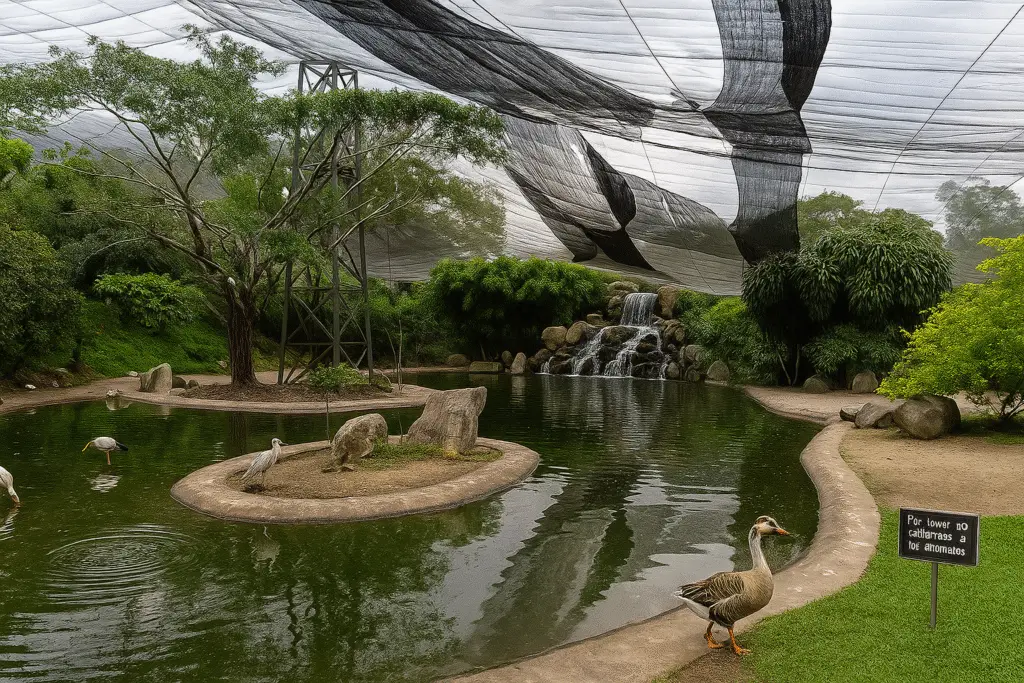
The Kuala Lumpur Bird Park stands out as the largest covered aviary in the world, offering a unique experience for those looking for what to see in Kuala Lumpur. Located in the scenic Lake Gardens, this 8.5-hectare park is home to more than 3,000 birds from around 200 different species, most of which are native to Southeast Asia. The “free-flight” aviary concept allows birds to fly freely within massive suspended nets, creating an environment that closely resembles their natural habitat.
The park is divided into four zones, each designed to replicate specific natural ecosystems. Exhibits include an impressive collection of exotic birds, from colourful toucans to majestic peacocks. For those exploring what to do in Kuala Lumpur, the park offers interactive activities such as scheduled feeding sessions, bird shows and photo opportunities with rare species. The breeding section allows visitors to observe the rearing process of some rare birds.
Kwai Chai Hong
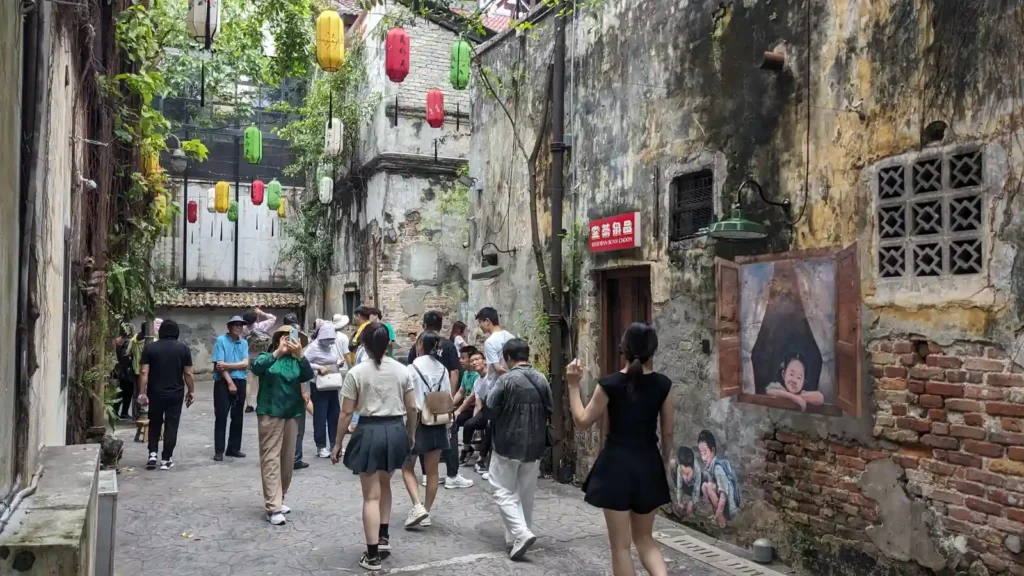
Kwai Chai Hong is one of the most charming and successful restoration projects to visit in Kuala Lumpur. This historic alleyway in the heart of Chinatown has been transformed into an open-air gallery that celebrates the city’s Chinese cultural heritage. Artistic murals and interactive installations recreate everyday scenes from the 1960s, giving visitors a chance to step back in time to old Kuala Lumpur.
The restored buildings lining the alley maintain their traditional Chinese architecture, while the carefully crafted murals tell stories of the daily lives of early Chinese immigrants. For those wondering what to do in Kuala Lumpur, every corner of this alley offers a unique photo opportunity, with interactive elements that let visitors “step into” the painted scenes. Scattered QR codes provide detailed background on the history and meaning of each mural.
The project has not only revitalised the space physically but has also drawn a new generation of entrepreneurs who have opened modern cafes, artisanal bars and boutique shops in the surrounding heritage buildings. This unique blend of old and new creates a lively atmosphere that attracts both locals and tourists, especially on weekends when the area comes alive with cultural events and pop-up markets.
Petaling Street
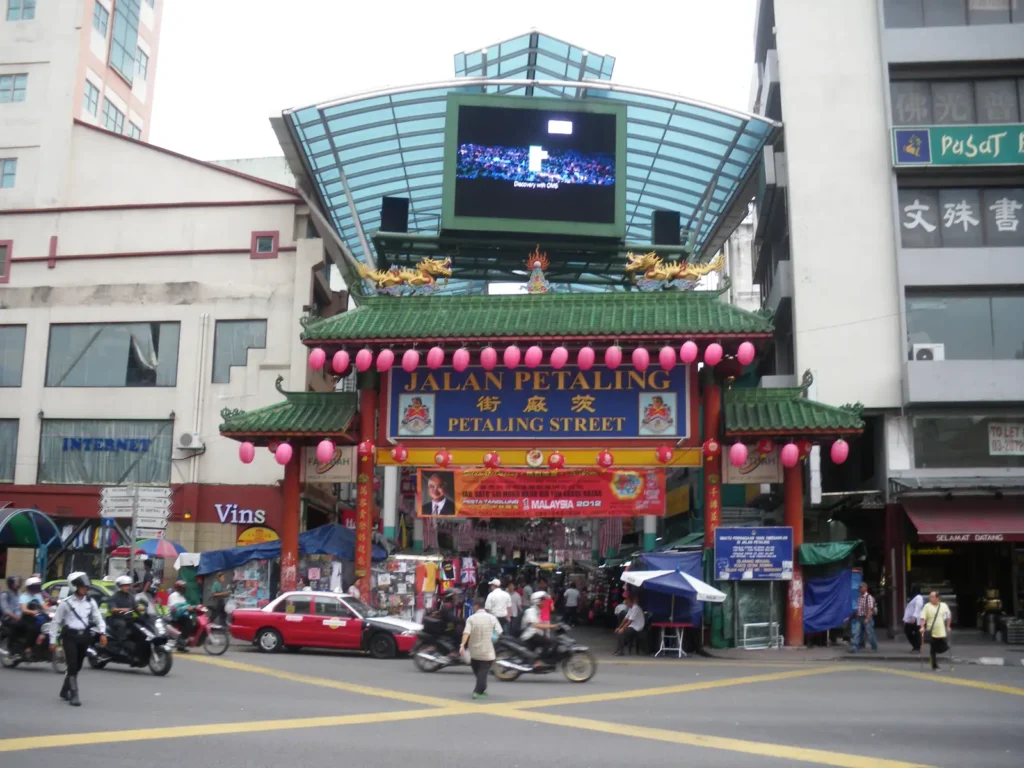
The iconic Petaling Street, the beating heart of Chinatown, is one of the most authentic experiences to have in Kuala Lumpur. This bustling commercial street, covered by a distinctive green roof, is famous for its night market and vibrant atmosphere. During the day, traditional shops offer a wide range of products, from Chinese medicinal herbs to textiles, while at night the area transforms into a lively evening bazaar.
The street is a feast for the senses, where the aroma of street food mingles with the buzz of vendors and shoppers haggling over prices. For those exploring what to do in Kuala Lumpur, the many food stalls serve as a delicious introduction to local cuisine, from famous Hokkien noodles to traditional Chinese sweets. The historic buildings lining the street, with their art deco facades and traditional Chinese architecture, provide a fascinating backdrop to the lively trade.
Beyond shopping and food, Petaling Street is a living testimony to Kuala Lumpur’s multicultural history. Nearby temples like Chan See Shu Yuen and Sri Mahamariamman reflect the area’s harmonious coexistence of cultures. The side alleys hide architectural gems and small family-run shops that have been operating for generations, offering a unique glimpse into traditional life in Chinatown.
Tips for your visit
🕒 Best hours: 10:00 am – 5:00 pm for traditional shops 6:00 pm – 10:00 pm for the night market
💰 Haggling: Start by offering 50% of the initial price Always keep a friendly and respectful attitude
🍜 Food: Kim Lian Kee for Hokkien Mee Hon Kee for fish porridge
What to see in other Malaysian cities

Malaysia is a diverse country that offers much more beyond its capital. From historic cities to tropical paradises, here are the top destinations to complement your visit to Kuala Lumpur.
Penang: The Pearl of the North
Georgetown, the capital of Penang, is famous for its UNESCO World Heritage-listed old town. The historic streets blend British colonial architecture with Chinese temples and traditional mansions. Georgetown’s street art has gained international recognition, with murals creatively telling the city’s story.
Penang’s cuisine is considered one of the best in Southeast Asia. Char Kway Teow, Asam Laksa and Nasi Kandar are must-try dishes found at lively night markets and local food courts. Don’t miss a visit to Kek Lok Si Temple, the largest Buddhist complex in Malaysia.
Malacca: A Step Back in Time
This historic port city perfectly reflects Malaysia’s colonial heritage, shaped by Portuguese, Dutch and British influences. Its UNESCO-listed old town is known for red-hued buildings, the iconic Christ Church and the Porta de Santiago, a remnant of the former Portuguese fortress.
Jonker Street, the heart of Chinatown, comes alive on weekends with its famous night market. The Peranakan mansions showcase the unique fusion of Chinese and Malay cultures and are a testament to the city’s rich trading history.
Ipoh: Culinary and Natural Treasures
The capital of Perak state is known for its local cuisine, especially Ipoh white coffee and chicken with bean sprouts. The old town features well-preserved colonial buildings and artistic murals that rival those in Georgetown.
Nearby Tambun caves contain prehistoric rock paintings, while cave temples like Sam Poh Tong offer a unique spiritual experience. Nature lovers can head to the Cameron Highlands tea plantations just a short drive away.
Kota Kinabalu: Gateway to Malaysian Borneo
The capital of Sabah state, Kota Kinabalu is the perfect base for exploring Malaysian Borneo. This modern city contrasts with traditional markets like the Filipino Night Market and Central Market. Kinabalu National Park, home to Southeast Asia’s highest peak, Mount Kinabalu, is a must for hikers.
The islands of Tunku Abdul Rahman National Park, accessible by boat, offer idyllic beaches and excellent snorkelling and diving. Sabah’s indigenous culture can be explored at the Sabah State Museum and nearby cultural villages.
Kuching: The Charm of Sarawak
The capital of Sarawak blends modernity with Bornean tribal tradition. Kuching’s waterfront is one of the most scenic in Southeast Asia, lined with historic buildings, markets and food stalls. The Sarawak Museum provides a fascinating introduction to the state’s natural and cultural history.
Nearby national parks like Bako and Semenggoh allow you to see orangutans and other native species in their natural habitat. Local cuisine, including Laksa Sarawak and Kolo Mee, reflects the region’s cultural diversity.
Domestic travel in Malaysia is efficient and affordable. Flights connect major cities, while buses and trains are great for exploring the peninsula. To visit Borneo (Kota Kinabalu and Kuching), you’ll need to fly from Kuala Lumpur or Penang.
Johor Bahru: The Southern Gateway
Located at the southern tip of the peninsula, Johor Bahru has grown from a border town to a travel destination in its own right. LEGOLAND Malaysia Resort and Hello Kitty Town have made it a popular family destination. The historic district features the Sultan Abu Bakar Mosque and the Royal Abu Bakar Museum.
New developments like the R&F Princess Cove complex and Johor Premium Outlets offer top-tier shopping experiences. Nearby Danga Bay provides a perfect escape with waterfront dining and water activities.
Best Free Tours in Kuala Lumpur
We are a group of Malaysian licensed tour guides -Direction Guides ( David Tan, Han, Joanne) working in the tourism…
We are a group of Malaysian licensed tour guides ( David Tan , Han and Joanne) work…
We are a group of guides officially recognised by Ministry of tourism of Malaysia – Easwrarau, Ramesh, and Sk Revindar…
We would like to inform you that this tour is tip-based, with a minimum contribution of Rm120 PER PAX. …
You’ll walk with me through places like Kampung Bharu, where traditional wooden houses still stand proudly in the shadow of…
Greetings from Kuala Lumpur! Nestled in the heart of Malaysia, this beautiful city boasts a rich
One for heritage and history buffs! We start where two rivers meet at Masjid Jamek, the birthplace of Kuala Lumpur….

